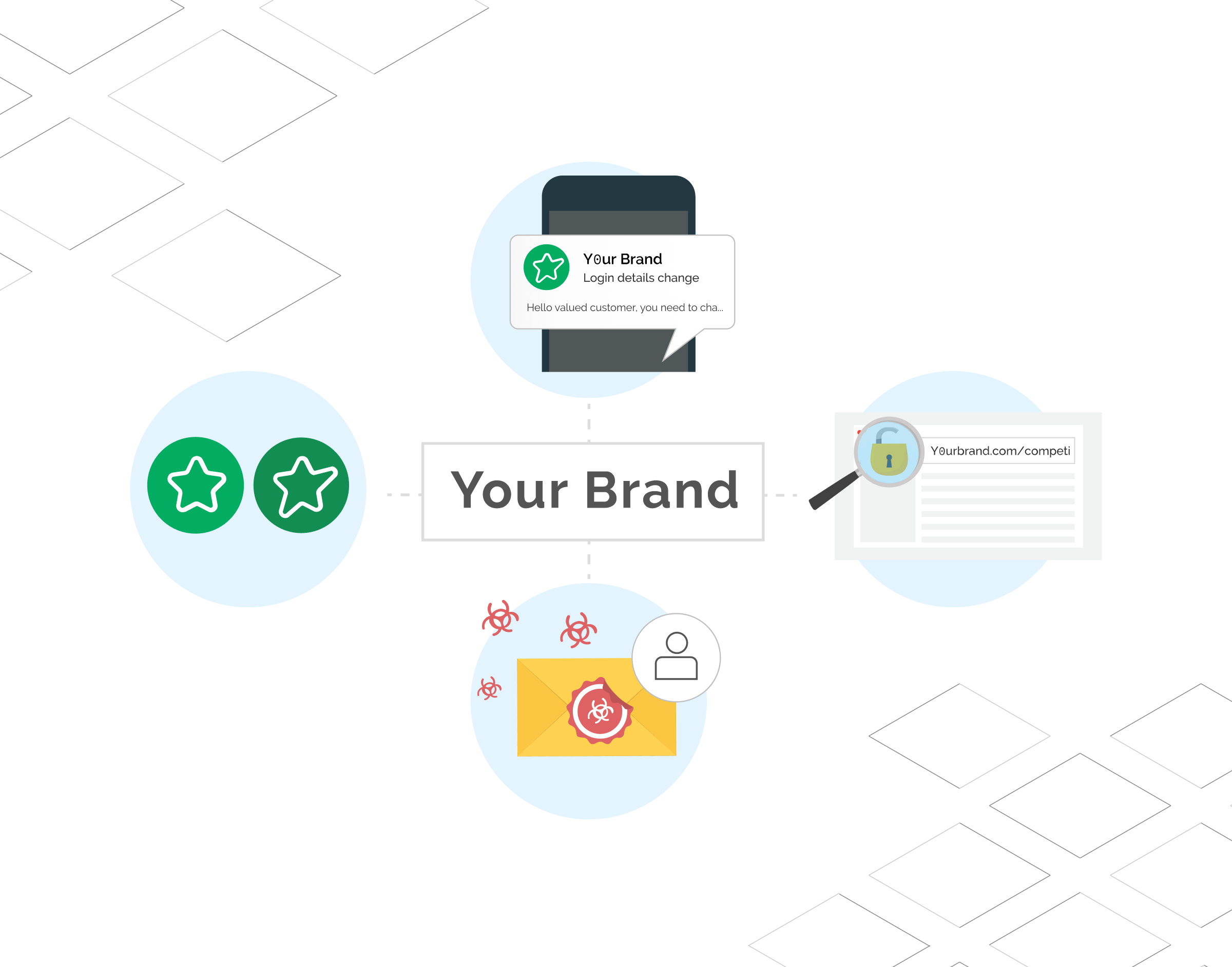The digital landscape is prone to counterfeiting and impersonation attacks, so implementing the requisite measures to protect your brand is essential. You must comply with efficient and comprehensive monitoring services as the driving force for constructive online brand protection.
This blog discusses what is online brand protection, brand abuse, and ways to protect your brand from them.
What is Online Brand Protection?
In its simplest terms, online brand protection encompasses all the strategies, tools, and rules established in a business to prevent cybercriminals from abusing your brand in any way. The exercise helps protect your business reputation, revenue structure, and customer privacy.
Brand protection is much more than just setting up firewalls and intrusion prevention systems. It means being proactive in online brand monitoring, where you scan public and private assets, spot and shut down fake social media profiles and lookalike domains.
What is Brand Abuse?
Your organization is open to brand abuse in many ways. Brand abuse is an umbrella term that includes an outside party infringement on your brand’s digital property to take advantage of its high reputation. Some of its common forms include:
Counterfeiting
Counterfeiting means imitating products from an authentic brand manufactured unofficially and usually by external sources. Counterfeit products deceive consumers using the same logos, trademarks, and designs. These items are generally of degraded quality and sold at cheaper rates that harness the original brand’s reputation.
Rogue Websites
Rogue or spoofed websites are created with the malicious intention of tricking users into sharing personal details. It’s done against legitimate companies or by infringing their IPs. Common techniques include:
- Cybersquatting The unauthorized registration and use of internet domain names that are similar to reputed companies’ trademarks, service marks, names, or personal names. Cybersquatting is the practice of buying domain names and selling them later at higher rates.
- Typosquatting A social engineering tactic that targets people who mistakenly type an incorrect URL into their web browser rather than using a search engine. Cybercriminals register domains with deliberately misspelled names and lure unsuspecting websites into visiting such websites.
- Website Cloning A duplicate website that looks exactly like the official one. Hackers clone the design, content, and code to trick visitors into believing they are on the original website.
Copyright Piracy
Copyright is the legal protection subjected to artistic, literary, and scientific creators. Website owners must be protective of their copyright as an online brand protection exercise. This also prevents counterfeiting to some extent, as it’s illegal to copy a product’s authentic images and use them to promote your work.
Trademark Squatting
Trademark squatting occurs when counterfeiters fool consumers into investing in a product or service they perceive as a legitimate brand. The fake products aren’t of the same quality, and this hampers the official brand’s reputation among customers.
Trademark squatters register trademarks with malicious intentions. This is done by foreign registration of marks that are yet to be registered abroad and transliteration issues.
Patent Theft
The patent refers to legal protections granted to innovative products offering an innovative solution to a problem. Creators of such products are subjected to patent protection so that outside parties are outlawed from using their designs. This way, outside parties infringing on patents make profits out of their time and money imbued into creating the product.
Social Media Impersonation
It’s an identity theft scam popular on platforms like Facebook, Instagram, and LinkedIn. Threat actors impersonate brands and their employees on social media platforms to sell counterfeits, redirect users to cloned websites, or distribute malicious software. Some people may consider it a mild annoyance; however, cybersecurity experts foresee it as a significant threat to brands’ authenticity.
How to protect your brand?
You can involve third-party experts for online brand monitoring or take the following measures yourself.
Multi-Factor Authentication
Protect your accounts and devices by adding extra layers of security apart from usernames and passwords. These additional layers can be One-Time Passwords (OTPs), biometrics, answers to personal questions and giving access through mobile notifications. So, even if cybercriminals get their hands on your passwords, they won’t be able to access your systems or devices.
Website SSL
SSL websites have signs of a padlock in the URL bar. It helps users recognise that they have landed on a legitimate, officially-secured website.
Domain and Subdomain Monitoring
Domain and subdomain monitoring lets you uncover all the registered and available domains related to your brand. You can also check the exact brand names or characters of your trademark.
Wondering what a subdomain is?
Subdomains carry additional information linked to the beginning of a website’s domain name. It helps organize content for specific tabs like a blog section, contact-us page, product pages, etc.
IP Registration
You can’t fight legally if you don’t register your IP address. Counterfeiters can create fake products and cloned websites which could be detrimental to your reputation in the market.
NDAs with Partners and Third-Party Vendors
Getting NDAs signed by partners and third-party vendors helps keep digital assets out of the hands of cybercriminals eyeing sensitive details of your brand. It’s a legal document that prevents them from disclosing confidential information crucial to your company’s growth and reputation.
Protect Your Brand With Red Sift
Online brand protection is critical to your growth and reputation. Thus, you shouldn’t neglect it. Red Sift helps security-first brands communicate with and ensure they don’t lose the trust and faith of their employees, customers, prospects, and partners. We offer a multi-angled suite of threat protection applications, including:
- Red Sift OnDMARC blocks the most sensitive attack vector- the impersonation of real domains.
- Red Sift Brand Trust uncovers and disarms impersonation domains as they are being prepared and before they can reach the inboxes of customers, counterparties, or the wider public.
- Red Sift Certificates discovers and continuously monitors every SSL/TLS certificate in your network for expiration and revocation to avoid PKI-related downtime and risk.
- Red Sift ASM discovers, inventories and helps manage your business’s critical external-facing and cloud assets.
Contact us today more for more information about how to protect your online brand reputation.







